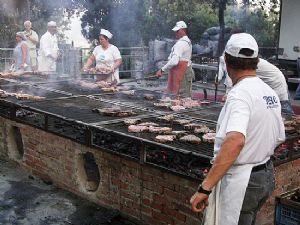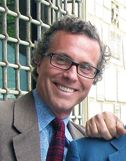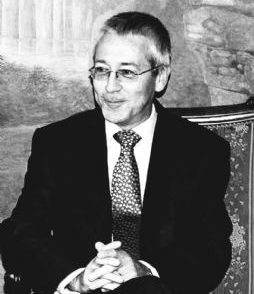Born in the
United States, Monsignor Timothy Verdon has no single job description. He is an
art historian with a Ph.D. from Yale University, a priest in Florence, director
of the Diocesan Office for Catechesis Through Art, the author of books and
articles on sacred art, was a consultant to the Papal Commission for the
Cultural Heritage of the Church, and is a professor at the Stanford in Florence
program and the Facoltà Teologica dell’Italia Centrale. He is a Canon of the
Florence Cathedral and a member of the board of administration of the Cathedral
Foundation and Museum. He recently curated the much-awaited exhibition in
Turin, The Body, the Face, and the Person of Jesus, organized on the occasion
of the public exposition of the Holy Shroud, which attracted over two million
visitors. The shroud is said to represent the face and body of the man who
claimed to be the son of God, and the exhibition therefore traces the depiction
of Jesus from the Middle Ages to the Modern Era, and how painters and sculptors
of different periods visualized him.
You have so many titles! What would
you say is your job description?
Well, I’m responsible for an enormous amount of
Italian art as director of the Office of Sacred Art and Ecclesiastical Cultural
Heritage through the Archdiocese of Florence. In one way or another, I’m
responsible for 80 percent of what people see here in Florence. The great
monuments that are not the property of the church and the great paintings and
statues that are now in public museums are my responsibility only in the sense
that I’m one of the people who is supposed to interpret their meaning from
within the church; I’m supposed to help others understand what they meant in
heir original ecclesiastical context. In that respect I’ve been for years
director of something in the Archdiocese that’s called the Office for
Catechesis through Art, since most of this art was originally meant to teach
the faith. In my role as head of the broader office of Sacred Art and
Ecclesiastical Cultural Heritage, I’m responsible for the physical upkeep and
safeguarding of a great many works in our churches, monasteries, and so on. I’m
not the immediately responsible person, since in every case there is a head of
the local religious community who bares direct responsibility, but in the
larger sense concerning the relationship that we have to maintain with the
state art authorities, the soprintendenze, I’ve become the person
responsible.
All of this now,
which I once looked upon as simply beautiful and wonderful, is now work! I’m
very happy about that, of course. One of my lighter moments is teaching my
students!
Why did you choose Florence as your home and
workplace?
Actually,
Florence was chosen for me by my doctoral dissertation advisor. I had been
living in Venice at the time, and was much more deeply attracted to the
historic preservation of that ‘magical lagoon’ than to the hustle and bustle of
Florence. However, upon arriving it gradually became clear that while in
Florence one has to deal with the everyday realities of all modern cities, it
offers something which most modern cities do not, which is that of the astounding
beauty of the Tuscan countryside and the wall of cypresses and olive groves
surrounding it. On the other side of the coin, we have the great arts. The
extraordinary buildings, the churches, the artwork with which ordinary citizens
interact with on a daily basis whilst navigating the narrow streets of
Florence-it is a city in which human creativity and creation itself are
constantly in dialogue, a city in which everyday life and monumental works
coexist beautifully. Also, the strongly political dimension one finds in this
city was very stimulating-the distinct character of the Florentines! They
always answer back with something different and unique, inviting you to
reconsider your opinion. I found myself wonderfully accustomed to the continual
intellectual stimulus that Florentine life provides, and while Venice is now
really part of my now distant youth, Florence has become a deeply interwoven
part of my present.
The exhibition you curated in Turin has garnered
a lot of attention, especially considering the fanfare surrounding the Shroud
of Turin. It must take considerable maneuvering to organize such a massive
show. Could you tell us about the politics involved in organizing an exhibition
as vast as the one in Turin?
The politics of curating the show functioned,
and generally function, at several levels. In this case, it was first the
‘business’ of showing investors and museum directors that we had the practical
capacity to execute a project communicable to wide numbers. These are the normal
politics that are put to work in the beginning of any professional
relationship; it was a matter of convincing those that run the Veneria di
Torino that this would not be a religious event inappropriately executed in a
state museum, or an experience that would be beautiful and moving only to
Christians. I had to articulate my conviction that this is primarily an
anthropological theme: it is an invitation to contemplate the artistic
depiction of the most discussed, followed and controversial figure in Western
history!
What is involved in the
lending of priceless works like Michelangelo’s Crucifix?
When financing and accepting on loan priceless
works, sometimes you have to ‘pull out the big guns.’ I had to approach
investors and museums with recommendations-in this case, each work we asked for
in Piedmont was accompanied by a strong recommendation on behalf of the
Archbishob of Turin, Severino Poletto. In Italy, this is normal cultural
protocol-the influence of the Catholic Church for an exhibit of the sort is
important, and a letter from the local head of the church has its weight. The
same occurred in Florence, where requests were accompanied by a recommendation
by Archbishop Giuseppe Betori and mayor Matteo Renzi, specifically with the
works from Santo Spirito. On a much broader scale, we also asked for and
received a letter of support at the maximum level, from Pope Benedict’s
Cardinal Secretary of State, Tarcisio Bertone. Of course, curators could still
say no, but in this case to say yes was to add a significant building block to
an important undertaking that had much broader significance.
Do you have a short list of places in Florence
that tourists always miss but should not?
That list could be endless! One place that
tourists often skip is the Capellone degli Spagnoli at Santa Maria Novella. So
many visit the church without paying the additional ticket to see the
extraordinary hall, known as the Spanish Chapel. What is now a city museum is,
in reality, the Green Cloister of the Church. It is truly one of the most total
artistic experiences a tourist can have and something I certainly wouldn’t
recommend to those susceptible to Stendhal’s syndrome. Every square millimeter
of the Capellone is covered in frescoes, the subjects of which are enormously
rich with meaningful detail, not least of which is the miraculous depiction of
Florence’s cathedral by Andrea Bonaiuti painted in the 1390s, which provide an
insight into the original designs for the Duomo. The fresco was painted some 70
years before the Duomo was completed [even before the structural design
competition for the dome occurred], which means Florentines already knew what
they wanted their cathedral to look like! It appears almost exactly as it looks
to tourists today, making the chapel an important historical document, right
inside what was the chapterhouse of the monastery.







